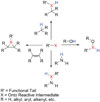
Figure 1. Silane Hydrolyses and Polymerization
Adhesion Promoters for Metal and High-Surface-Energy Inorganic Substrates
The most common commercial adhesion promoter is based around silane coupling agents. Silanes are most often used to promote the adhesion between polymeric systems and inorganic substrates.Silane promoters typically comprise a tetravalent Si core (which has an organo functional tail) and some form of hydrolyzable group, such as a chloro or alkoxy attached. When applied to the substrate surface, the silane is hydrolyzed to form a silanol, which condenses and polymerizes with itself to form an extended network. If the silanol is on a substrate with sufficient oxide functionality, cross coupling can take place, anchoring the polymerized silanol to the surface (see Figure 1). The choice of organofunctional tail on the silane is dictated by the adhesive class that is being used (e.g., for an epoxy adhesive system, a tail containing an amino or epoxy moiety would be suitable).

Figure 2. Effectiveness of Silanes on Different Substrates
Titanate and zirconate coupling agents are growing in popularity. They are predominately used to improve filler polymer adhesion in composites. Both titanates and zirconates react similarly to silane coupling agents by way of condensation to surface hydroxyl groups; however, unlike silanes, there is not condensation polymerization to produce a network at the interface.

Figure 3. Overview of the Reactivity of Onto Adhesion Promoters
Adhesion Promoters for Organic and Low-Surface-Energy Inorganic Substrates
Low-surface-energy and solvent and chemical inertness all make organic materials difficult to bond. The lack of “surface chemistry” (such as hydroxyl) on most organic substrates renders silane adhesion promoters ineffective. Recently, Oxford Advanced Surfaces developed Onto®, a novel class of adhesion promoters for use on organic and low-surface-energy inorganic substrates.
Figure 4. Example of Onto Adhesion Promoter Modifying a Polypropylene Substrate.

Figure 5. T-Peel Testing with Loctite 4105 Cyanoacrylate Resin with Onto Adhesive Promoters
Onto adhesive promoters are applied as solventborne formulations in MEK or toluene by way of appropriate coating techniques (such as spray, dip, spin or roll-to-roll) then cured by activated heat (approximately 100°C) or UV light (254 nm).
These adhesive promoters have been demonstrated on both Melinex-OD polyester film and Kapton-HN polyimide film, and have been shown to increase the T-peel and lap sheer forces when used in conjunction with cyanoacrylate (see Figure 5) or epoxy adhesives (Figure 6).

Figure 6. Lap Shear Testing Optitec 5054 Epoxy Resin with Onto Adhesive Promoters
Summary
Adhesion promotion is a powerful technique for increasing the strength of adhesive bonds. Adhesion-promoting systems should be chosen based on the chemical nature of the substrate. For example, for high-surface-energy metal/inorganic, choose silanes, titanates or zirconates; for low-surface-energy organic substrates, an Onto system is appropriate.For more information, contact Dr. Jon-Paul Griffiths at +44 (0)1865-854807 or visit www.oxfordsurfaces.com.